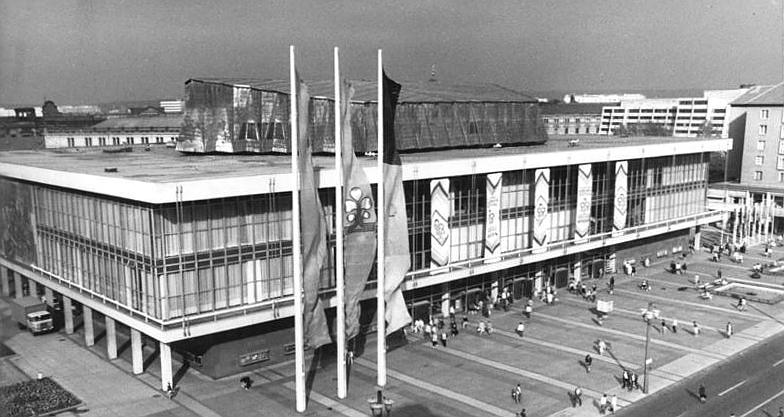Ulrich Häßler, Palace of Culture, Dresden (arch. Leopold Weil & Klaus Wever, 1966-69), 1985, Bundesarchiv Koblenz, Bild_183-1985-0918-026.
This photograph shows the Palace of Culture which was built in Dresden at the end of the 1960s, after a long period of indecision and hesitation.
The Palace of Culture is a building which is characteristic of the cultural policy implemented in the GDR at the time of its construction. It is a public place designed to host not only a variety of cultural events (classical concerts, popular music, shows, exhibitions), but also the official events of the regime. This style of building often housed a public library (e.g., in Dresden). The construction of these “houses of culture” made the working-class dream of happiness come true as, thanks to the communist revolution, they now gained access to the refined leisure activities previously reserved for the bourgeoisie. It is therefore one of the strong symbols of an egalitarian society.
The Dresden Palace of Culture is an elegant modernist building whose appearance resembles a glass box on concrete pillars. Its light allure stands in contrast with the massive volumes of the 1950s buildings on the Altmarkt square facing it. It is discreetly crowned by a metal structure which houses a concert hall that can only be seen from above (as shown here). On the side wall of the building, a large mural frieze tells the story of the “Red Flag Way”.
Originally, the perspective of Prager Strasse could be seen from the Palace of Culture, but since then other buildings have sprung up in between these two remaining fragments of the model socialist city.
Sonia de Puineuf

